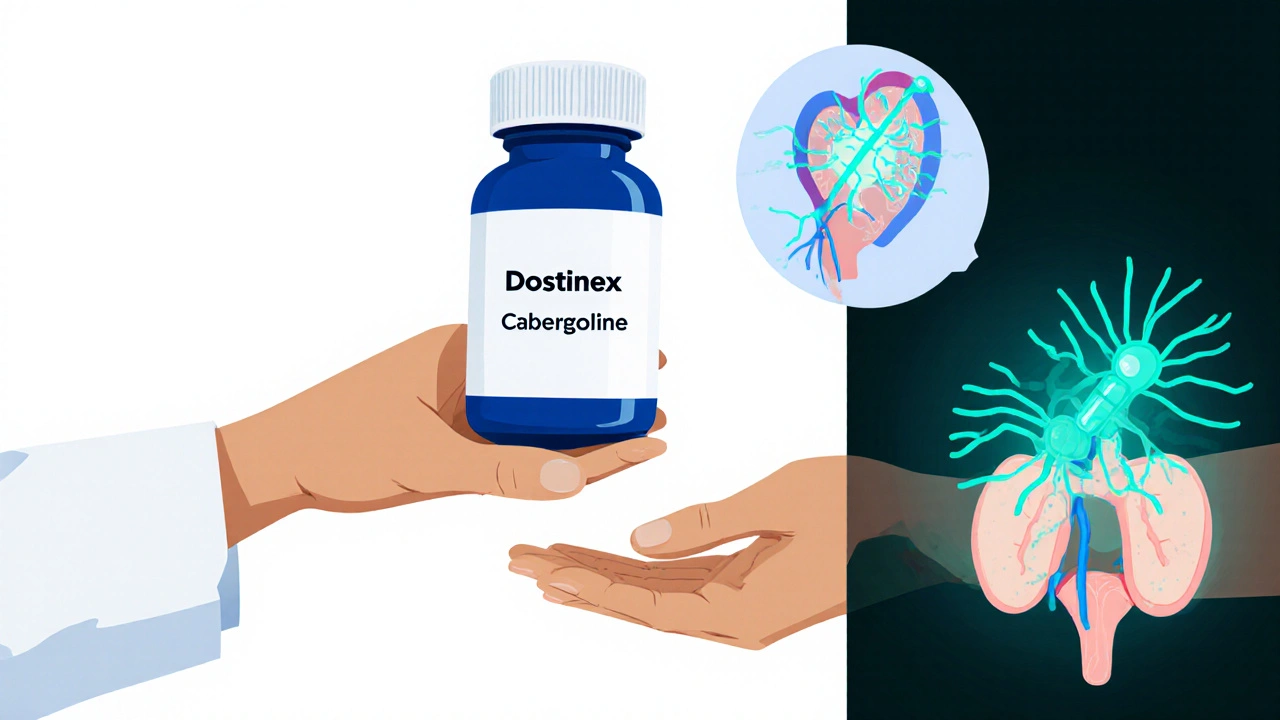
Dostinex (Cabergoline) vs. Alternatives: Complete Comparison Guide
A detailed guide comparing Dostinex (Cabergoline) with bromocriptine and quinagolide, covering efficacy, side effects, dosing, cost, and how to choose the right option.
When a benign tumor forms on the pituitary gland and pushes out too much prolactin, a hormone that controls milk production and can disrupt sex hormones. This condition is called a prolactinoma, and it’s one of the most common types of pituitary tumors. It doesn’t always cause symptoms, but when it does, you might notice irregular periods, low libido, breast milk when you’re not pregnant, or even headaches and vision problems. The good news? Most prolactinomas respond well to medication — surgery isn’t always needed.
The go-to treatment is usually a dopamine agonist, a drug that tricks the brain into reducing prolactin production. Cabergoline is the most common choice because it works longer, needs fewer doses, and has fewer side effects than older options like bromocriptine. It shrinks the tumor in most people and brings hormone levels back to normal. But it’s not the only option — if Cabergoline doesn’t work or causes trouble, your doctor might try bromocriptine or other alternatives. The key is matching the drug to your body’s response, not just going with the first name you hear.
Not everyone needs drugs forever. Some people can stop treatment after a few years if the tumor shrinks enough and prolactin stays low. But stopping too soon? That’s how symptoms come back. Regular blood tests and MRI scans are part of the plan — you can’t just feel better and assume it’s gone. And while surgery or radiation might sound scary, they’re usually saved for cases where meds fail or the tumor is pressing on your optic nerves. Most people never need them.
Side effects like nausea, dizziness, or fatigue are common at first, but they often fade as your body adjusts. Taking the pill with food or at night helps. If you’re on Cabergoline and feel faint when standing up, that’s your body adapting — but tell your doctor. There’s also a rare risk of heart valve issues with high doses over years, so monitoring matters. And if you’re trying to get pregnant, some dopamine agonists are safer than others — this isn’t something to guess at.
What you’ll find below are real comparisons and practical guides based on actual patient experiences and clinical data. You’ll see how Cabergoline stacks up against other drugs, what to do if side effects hit hard, and how to know when your treatment is working — not just by how you feel, but by the numbers. No fluff. No marketing. Just what helps, what doesn’t, and what you need to ask your doctor next.

A detailed guide comparing Dostinex (Cabergoline) with bromocriptine and quinagolide, covering efficacy, side effects, dosing, cost, and how to choose the right option.